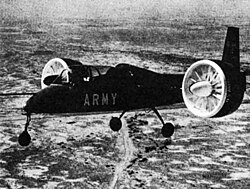D

- Dassault Balzac V (separate lift and thrust engines)
- Dassault Mirage IIIV (separate lift and thrust engines)
- Doak 16/VZ-4DA (ducted fans)
- Dornier Do 31 (thrust vectoring and lift jets)
- DuPont Aerospace DP-1 (vectored thrust)
This is a list of fixed-wing aircraft capable of vertical take-off and landing arranged under manufacturer. The list excludes helicopters, including compound helicopters and gyrocopters, because they are assumed to have this capability.
For more detail on subtypes of VTOL, see List of tiltrotor aircraft.
